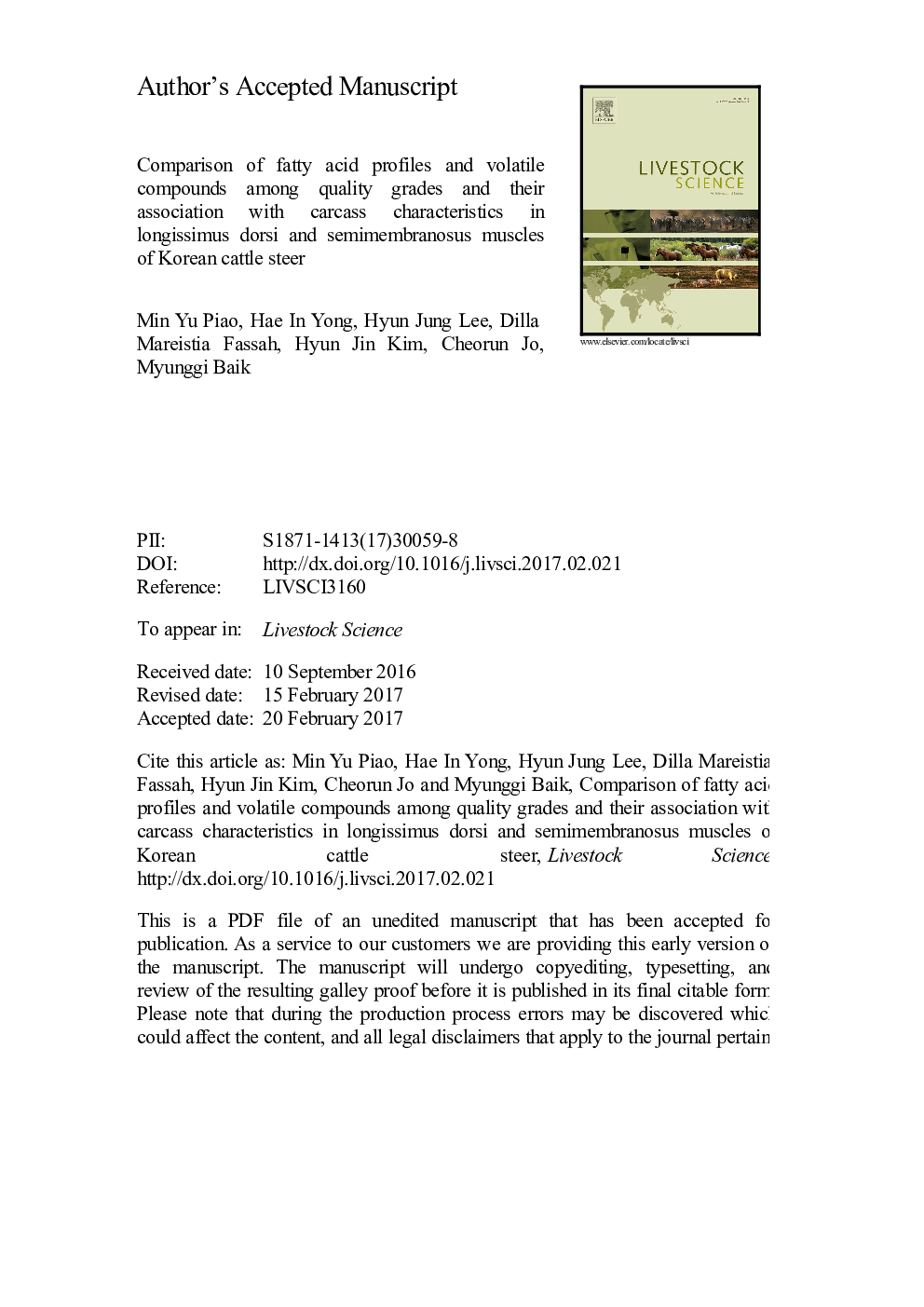| Article ID | Journal | Published Year | Pages | File Type |
|---|---|---|---|---|
| 5543148 | Livestock Science | 2017 | 37 Pages |
Abstract
This study was performed to compare the content and composition of fatty acids (FA) and volatile compounds among four quality grades (QG1++, 1+, 1, and 2), and to understand their association with carcass characteristics in longissimus dorsi (loin) and semimembranosus (rump) cuts of Korean cattle steers. QG1++ and QG2 loins showed the highest (P<0.05) and lowest percentages of oleic acid (C18:1n9) and monounsaturated FA, respectively. QG1++ loins had greater (P<0.05) percentages of volatile hydrocarbons, including n-pentane, n-hexane, and 2-butene, and these compounds were positively correlated (0.56⤠r â¤0.81; P<0.001) with QG and crude fat content (g/100 g meat). Percentages of loin acetonitrile (r =0.74, P<0.01) and butanal (r =0.71, P<0.01) were positively correlated with flavor, whereas those of loin 2-methyl-2-propanol (r =â0.62, P<0.05) and 3-methyl-2-butanone (r =â0.60, P<0.05) were negatively correlated with flavor. In conclusion, loin FA percentages, especially C18:1n9 and monounsaturated FA, tended to be higher with increasing QG. Loin volatile compounds, including n-pentane, n-hexane, and 2-butene, were also higher with increasing QG.
Keywords
Related Topics
Life Sciences
Agricultural and Biological Sciences
Animal Science and Zoology
Authors
Min Yu Piao, Hae In Yong, Hyun Jung Lee, Dilla Mareistia Fassah, Hyun Jin Kim, Cheorun Jo, Myunggi Baik,
